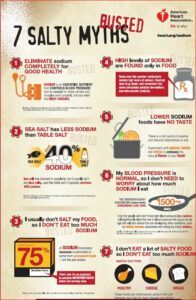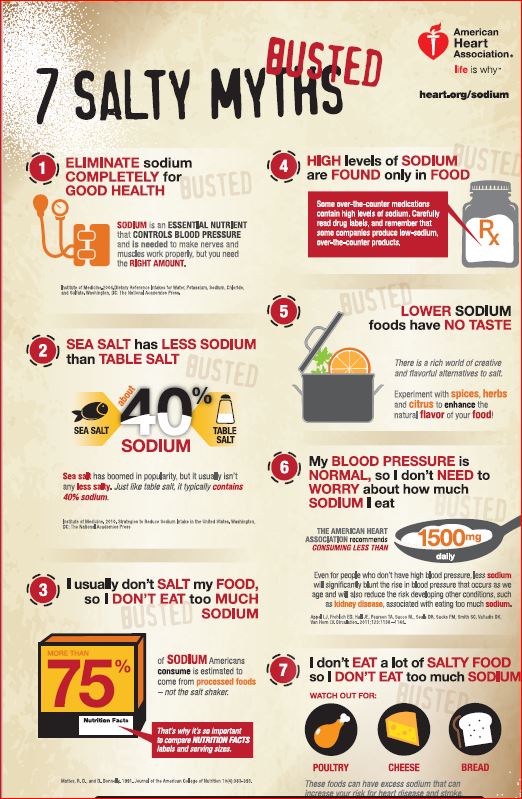How To Lower Blood Pressure Quickly Naturally
You must know by now that high blood pressure is very dangerous and deadly. It can cause a stroke, kidney failure, vision loss, heart attack, sexual dysfunction and cardiovascular disease.
The only way to know your blood pressure is to have it measured by your doctor or you can also learn how to take it yourself. This way you can prevent high blood pressure, delay high blood pressure, and improve the effectiveness of your blood pressure medication.
If you have been tracking your blood pressure or if your doctor told you that your blood pressure is high and you don’t want to take medications then lowering your blood pressure naturally without medication is possible.
The quickest and easiest way to lower your blood pressure naturally without medication will require you to change some of the ways you are currently doing things.
What The Experts Recommend
According to the American Heart Association, here are the changes that you can make starting today to lower your blood pressure:
• become more physically active
• limit alcohol intake
• manage stress
• maintain a healthy weight
• quit smoking
• lower your intake of sodium
• increase your intake of potassium
Of the above, the quickest way to lower blood pressure naturally will be to change the way you eat.
To accomplish this goal, the dietary approach to stop hypertension, also known as the DASH diet, can help. It is recommended by the American Heart Association, and also the US National Heart Lung and Blood Institute and is an effective way to lower your blood pressure without medications. This is the only natural way you can lower your blood pressure quickly without medication. But in order for this to work effectively and quickly you have to follow a diet that is low in sodium and high potassium.
If you follow this diet, in four weeks you should see a reduction of your blood pressure. However, this can only be effective if your blood pressure is on the lower side of high blood pressure. In other words your blood pressure can’t be too high. Preferably the top number should not be above 150mgHg. Keeping your blood pressure too high for too long can lead to damage to your blood vessels. Diet alone will not work fast enough to get it down to recommended levels.
If your blood pressure falls within the severe hypertension range you should not follow this diet alone because it will not work as quickly as you want. You might have to take medications prescribed by your doctor.
About the DASH Diet
The DASH diet focuses on whole foods such as fruits, vegetables, whole grains, low fat and dairy, poultry, beans, seeds and nuts.
How do you start the DASH diet?
First you would want to look at the food that you are currently eating and determine which ones are high in sodium or salt. Check your pantry and fridge; any packaged food should have the sodium content of that food.
If you eat out a lot then start there. Your goal is to eat no more than 1200 mg of sodium daily. The American College of cardiology recommends somewhere between 1000 to 1500 mg daily. This includes all source of food including liquids such as soups and solid food such as breads. If you like to use condiments such as mayonnaise and ketchup on your french-fries and hamburger then you also need to examine the sodium content of those foods.
Reducing, not eliminating, your sodium intake can decrease systolic blood pressure. That’s the top number in your blood pressure measurement by about 7 to 10 points.
This might not seem like a lot, but if your blood pressure is 140/80 review sent it by 10 points will put you right at 130. Along with all the other measures mentioned above, this will help keep your blood pressure in the normal image.
Your goal should not be to eliminate sodium. You need sodium in your body to help with the function of your muscles and nerves. However, too much sodium in your body causes your body to retain water. Extra water in your body causes your heart to work harder to pump the blood and water throughout your body.
While sodium keeps water in your body potassium does the reverse. A diet that is high in potassium and low in sodium can help keep your blood pressure normal. Sodium and potassium are opposing electrolytes in your body.
The American Heart Association recommends about 4700 mg of potassium daily. Depending on the literature that you need, you will see recommendations between 3500 mg to 5000 mg per day.
You should get your potassium from food not supplements. Your goal is to identify foods that are high in potassium but low in sodium. This shift in fluid balance will help normalize your blood pressure.
Let’s be honest, salt makes everything taste good. In fact some people add salt to their food without tasting it.
Sodium can be found naturally in whole foods therefore you can easily increase the sodium content of your food by adding salt. It’s best not to add salt until you actually taste the food. On the other hand salt is an acquired taste. Therefore, your taste buds can adjust to lower levels of salt. For the record 1 teaspoon of salt has 2300 mg of sodium.

Foods That Have the Most Salt
The best way to the sodium content of food is simply the label. This might be very hard to do if you don’t actually prepare the food yourself. Dining out might not be the best thing to do if you’re trying to lower your blood pressure quickly. This might be the first step to going about lower your blood pressure quickly.
Even if you are taking blood pressure medication you should still flow a diet rich in pottasium and low in sodium/salt.
There, are some exception. If you have kidney disease then you should not increase your pottasium intake. You will have rely on low sodium diet to lower your blood pressure.
Here is a list of foods with most salt/sodium content:
• sauces (meat, spaghetti, chili, BBQ)
• breads/rolls
• canned foods
• processed meats
• frozen dinners
• cheese
• salty snacks
• salty nuts
• condiments (ketchup, mayonnaise,)
• salad dressings
• breakfast cereals
Al thought not food per se, over the counter medications such as cough syrups and allergy medication can also be a source of sodium so is Sea Salt.
According to the American Dietetic Association, you should look for packages that are low sodium low salt, less than 120 mg of sodium per serving salt free, sodium free, very low sodium, low sodium, unsalted, no salt added, reduce sodium, or lower sodium. Always check the labels for the sodium content.
Instead of process foods eat fresh fruits and vegetables and skip the sauces. You can also use citrus, spices and herbs to enhance the flavor of your favorite foods. Be mindful of the seasoning that you add to your food such as garlic powder, onion powder and blended seasoning. The powdered seasons can also be a source of sodium. Read the label for the sodium and think salt.
How To Increase Your Intake of Potassium
If you want to decrease your blood pressure quickly without having to take medications you will also want to increase your intake of potassium.
Potassium is tasteless; therefore unlike salt you won’t taste it in your food. This is the main reason why it’s not added to food because it does not affect the taste. However, potassium is needed in your body because it helps your muscles to contract, especially your heart. In addition, along with sodium, potassium helps to regulate fluids in your body. Remember an increase in fluid in your body causes your heart to work harder to pump blood throughout your body.
Best Sources of Potassium
• leafy greens
• sweet potatoes
• cantaloupes
• banana
• tomatoes
• carrots
• zucchini
• eggplant
• pumpkins
• dairy products
• meat
• poultry
• fish
• nuts
Conclusion
To effectively manage your high blood pressure, you will need a team approach. Your team should include your doctor, a registered dietitian and you. If you want to know if this approach works, you will also have to check your blood pressure regularly.
Here are some articles about taking your blood pressure the right way and best blood pressure monitors.
The Correct Way To Take Your Own Blood Pressure at Home
Best iPhone Compatible Blood Pressure Monitor: Qardioarm Review
The Right Fit: 7 Factors That Affects Accurate Blood Pressure Measurement
4 Types of Blood Pressure Monitor: Which One is Right For You
Low Blood Pressure Diet Plan: DASH Diet Explain
5 Foods That Will Lower Your Blood Pressure
2020 Best Bluetooth Upper Arm Blood Pressure Monitors:Check Your Blood Pressure Today
